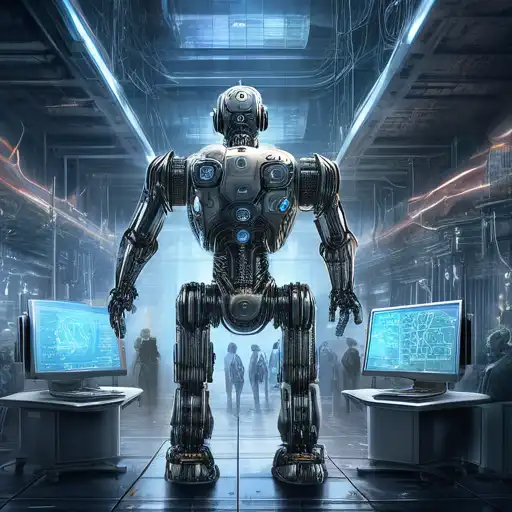Understanding AI and Machine Learning
In the realm of technology, Artificial Intelligence (AI) and Machine Learning (ML) are two of the most buzzworthy terms. While they are often used interchangeably, they represent distinct concepts with unique applications and implications. This comparative study delves into the nuances that set them apart, offering insights into their functionalities, uses, and future potential.
What is Artificial Intelligence?
AI is a broad field of computer science focused on creating systems capable of performing tasks that typically require human intelligence. These tasks include problem-solving, recognizing speech, and making decisions. AI can be categorized into two types: narrow AI, which is designed to perform a specific task, and general AI, which can understand, learn, and apply knowledge in a way similar to human intelligence.
What is Machine Learning?
Machine Learning, a subset of AI, involves the development of algorithms that allow computers to learn from and make predictions or decisions based on data. Unlike traditional programming, where humans write explicit instructions, ML systems improve their performance as they are exposed to more data over time. ML is further divided into supervised learning, unsupervised learning, and reinforcement learning.
Key Differences Between AI and Machine Learning
While AI aims to simulate human intelligence broadly, ML focuses on enabling machines to learn from data. Here are some key distinctions:
- Scope: AI encompasses a wider range of technologies and applications, whereas ML is specifically about learning from data.
- Dependency: ML is dependent on data to learn and make decisions, while AI can operate based on predefined rules without necessarily learning from data.
- Applications: AI applications include robotics, natural language processing, and more. ML is commonly used in data analysis, predictive modeling, and recommendation systems.
Applications of AI and Machine Learning
Both AI and ML have transformative applications across industries. AI powers virtual assistants like Siri and Alexa, while ML algorithms drive personalized recommendations on platforms like Netflix and Amazon. In healthcare, AI and ML are revolutionizing diagnostics and patient care, offering unprecedented accuracy and efficiency.
The Future of AI and Machine Learning
The future of AI and ML is incredibly promising, with advancements in deep learning and neural networks pushing the boundaries of what's possible. As these technologies continue to evolve, they will play a pivotal role in solving complex global challenges, from climate change to healthcare.
For those interested in diving deeper into the world of AI and ML, exploring data science and emerging tech trends can provide valuable insights into how these fields are shaping our future.
In conclusion, while AI and Machine Learning are interconnected, they serve different purposes and have distinct applications. Understanding these differences is crucial for anyone looking to leverage these technologies in their work or studies. As we stand on the brink of technological revolutions powered by AI and ML, the potential for innovation and improvement in our daily lives is limitless.
